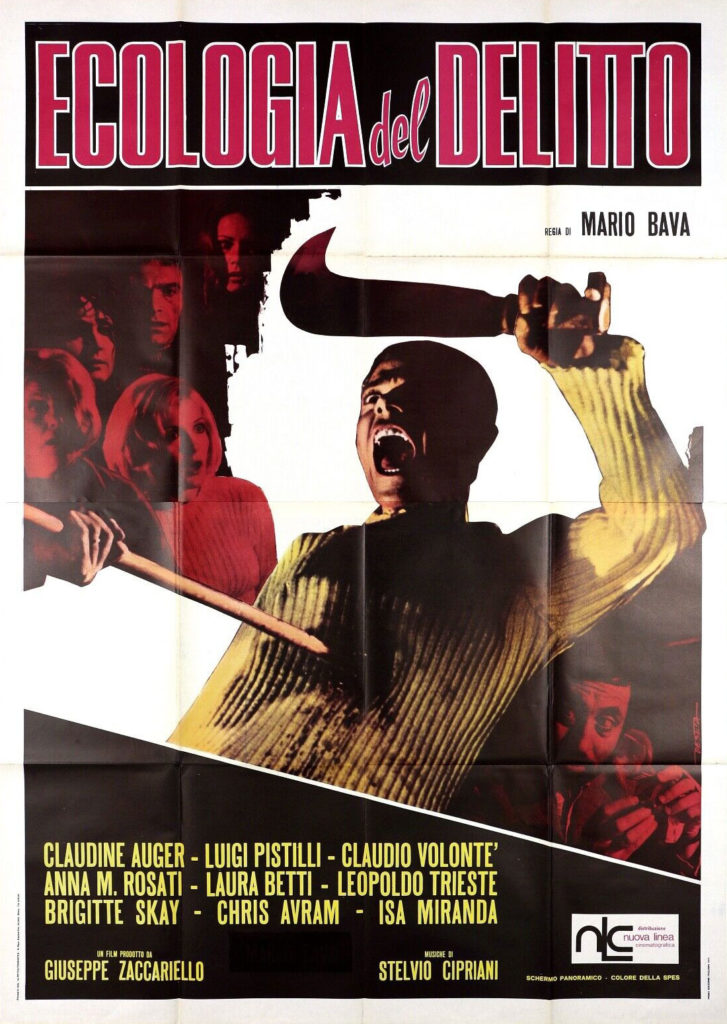Mario Bava was one of the greats of horror cinema. Not just Italian horror, but horror in general. Horror junkies the world over celebrate his more famous films as essential to the genre. Like with all artists, it wasn’t all smooth sailing. By the 1970s critics had begun to fall out of love with Bava, and that shows with the negative reaction to A Bay of Blood upon its release in 1971.
Contemporary critics and fans were hard on A Bay of Blood, as Bava had moved on from atmospheric gothic horror and into exploitation. Funny enough, though, this film proved to be as much an influence on later horror films as any other movie he had made. Viewers with more than a passing knowledge of American slasher flicks will see some of that subgenre’s genesis in A Bay of Blood. As such, it’s a film that garnered a much better reputation before the decade was out.
There’s a lot going on in this film. Isa Miranda plays the Countess Federica Donati, an older woman bound to a wheelchair. Before the opening scene is done, she is murdered at the hands of her husband, Count Filippo (Giovanni Nuvoletti), who disguises the killing as a suicide. But, within minutes of Filippo committing his grisly deed, he is stabbed to death by an unseen assailant, and dragged away. The Countess’s death is ruled a suicide, and her husband declared missing.
Cut to real estate agent Franco Ventura and his secretary, Laura (Chris Avram and Anna Maria Rosati). They hatched a plan with the Countess’s bastard son, Simone (Claudio Carmaso), to buy the Countess’s lakeside estate and develop it into a resort or some condos. The success of their plan hinges on Count Filippo remaining missing, so that the estate doesn’t revert to Filippo’s daughter from his first marriage, Renata (Claudine Auger). She and her husband, Alberto (Luigi Pistilli), really want the estate, so they have a vested interest in finding out  Filippo’s fate. Meanwhile, the Countess’s eccentric neighbors, amateur entomologist Paolo (Leopoldo Trieste) and his wife, Anna (Laura Betti), who is into tarot cards and Fernet Branca, end up caught in the middle of these real estate shenanigans.
Filippo’s fate. Meanwhile, the Countess’s eccentric neighbors, amateur entomologist Paolo (Leopoldo Trieste) and his wife, Anna (Laura Betti), who is into tarot cards and Fernet Branca, end up caught in the middle of these real estate shenanigans.
As if that weren’t enough players for this melodrama, four wild and crazy youths show up at the estate for some partying and light breaking and entering. They don’t have much to do with the plot, which was already threatening to overflow its banks. Bava needed some fresh meat for the audience, and they are it. In a middle act that could have bogged the movie down, Bava gave us viewers the bloody kills we crave. That done, he got on with the plot.
Bava used misdirection and twists multiple times to confuse the viewer, keeping us from knowing who was killing who, and how those killings fit into the numerous and conflicting plans. Bad guys get killed. Good guys get killed. Bad guys that we thought were good guys get killed. People we thought were killed were not. And it all leads up to one final scene that undermines the entire movie. It’s a wild ride, and quite typical of the convoluted plots in Italian cinema. It doesn’t matter if it’s wrapped up in a nice little bow when the credits roll. It’s all that came before that counts.
The plot may be a mess, and the fair amount of exploitation can be a turnoff to the more sensitive among us, but this is still a Mario Bava film. In the opening scene with the Countess we see his skills as a photographer, and know that we are going to school. Shot after shot in this film is constructed with a masterful sense of light, space, and composition, edited together by Carlo Reali to take one back and forth from the perspective of an unseen interlocutor, to closeup, to painterly visuals. The quality of the photography stands out among all the other Italian films in this year’s Horrorshow, so far, and that includes an Argento flick.
Bava also got fine performances from his cast. These are always tricky to judge in Italian flicks, as everyone is dubbed. Bad dubbing can take an otherwise fine performance and ruin it. None of the dubbing in A Bay of Blood did that, but one still has to watch these actors while mostly disregarding essential things like tone and cadence. Mannerisms are all we get, and, best as I can tell, no one flubbed it. Even Brigitte Skay, who played one of the vapid youths who were fodder for the audience, was believable. And, boy, was she vapid.
So, the movie was directed by a legend, looks great, the cast were pros, the gore was decent, but the plot was silly. Four out of five ain’t bad (five out of five for some of us), and since this was a proto-slasher flick, it’s essential viewing for the horror historians out there.
